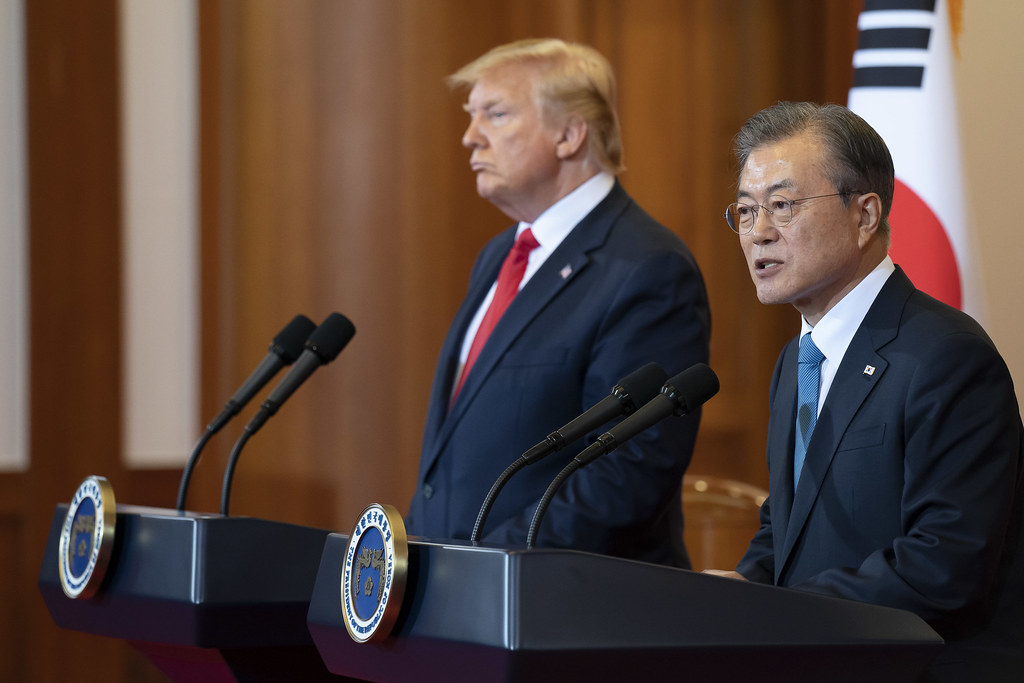
U.S. President Donald Trump announced on Wednesday a “Full and Complete” trade agreement with South Korea, setting a blanket tariff rate of 15% on South Korean exports to the U.S. This marks a reduction from the 25% tariffs previously threatened by Trump earlier this month, including the 25% tariffs on auto exports which will now be cut to 15%.
$350 Billion Investment Commitment Sparks Differing Views
Trump stated on Truth Social that South Korea “will give to the United States $350 billion dollars for investments owned and controlled by the United States, and selected by myself, as President.” However, there appears to be a difference between Washington and Seoul on how this figure will be applied.
South Korean President Lee Jae-myung said in a Facebook post that the fund will “facilitate the active entry of Korean companies into the U.S. market in industries where we have strengths,” naming sectors such as shipbuilding, semiconductors, secondary batteries, biotechnology, and energy. Lee added that $150 billion will be allocated for “shipbuilding cooperation,” emphasizing the importance of mutually beneficial outcomes.
Louise Loo, head of Asia economics at Oxford Economics, commented that the numbers announced “don’t add much more clarity” compared to previous deals the U.S. struck with other Asian partners.
U.S. Commerce Secretary Howard Lutnick said “90% of the profits” from the $350 billion investment would benefit Americans, echoing similar claims made in a recent trade deal with Japan, which Tokyo reportedly challenges.
Wendy Cutler, senior vice president of the Asia Society Policy Institute, noted that South Korea had little choice but to finalize its own deal after the U.S.-Japan agreement. She also pointed out South Korea’s success in resisting U.S. demands to open beef and rice markets further—two highly sensitive sectors.
Additional Trade Details
Trump also announced South Korea will purchase $100 billion worth of LNG and other energy products from the U.S. Details of further investments will be revealed during a bilateral summit expected within two weeks.
South Korea confirmed no tariffs will be imposed on U.S. goods, which already face a low effective tariff rate of about 0.79% as of 2024.
Cutler added that this new deal undercuts the value of the existing bilateral free trade agreement (FTA) that eliminated most tariffs between the countries since 2012. South Korea reportedly gained no special treatment in this new arrangement.
U.S. trade with South Korea totaled just over $197 billion in 2024, with a trade deficit of $66 billion, up nearly 30% from the previous year.
Lee expressed hope that the deal will strengthen industrial cooperation and the alliance between the two nations, emphasizing diplomacy centered on national interest.
Exports of steel, aluminum, and copper remain subject to 50% tariffs, unchanged under the deal.
Oxford’s Loo viewed the 15% tariff lock on autos as a win for South Korea, though she warned tariffs on electronics and semiconductors may still rise.
Following the announcement, South Korea’s Kospi index rose 0.5%, while yields on its 10-year bonds increased slightly.
What The Author Thinks
This trade deal illustrates the complex balancing act between economic interests and geopolitical influence. While tariff reductions and large investment commitments sound positive, the true impact depends on how these promises are implemented and enforced. South Korea’s cautious approach to sensitive markets like beef and rice shows a desire to protect domestic interests amid pressure. Meanwhile, the U.S. continues to leverage trade agreements to assert strategic advantages, but both sides risk instability if expectations and outcomes diverge.
Featured image credit: Trump White House Archived via Flickr
For more stories like it, click the +Follow button at the top of this page to follow us.
